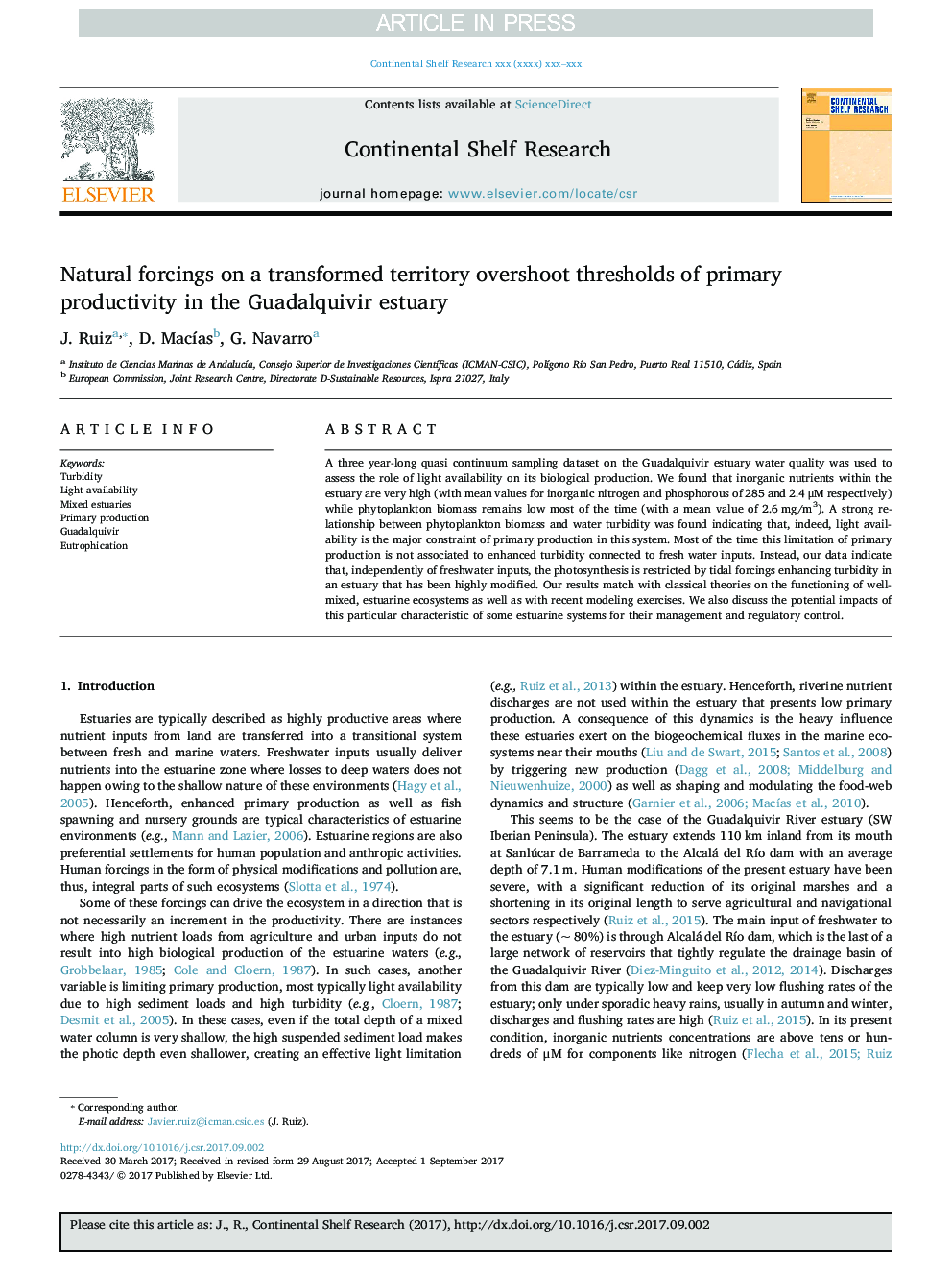| Article ID | Journal | Published Year | Pages | File Type |
|---|---|---|---|---|
| 5764539 | Continental Shelf Research | 2017 | 9 Pages |
Abstract
A three year-long quasi continuum sampling dataset on the Guadalquivir estuary water quality was used to assess the role of light availability on its biological production. We found that inorganic nutrients within the estuary are very high (with mean values for inorganic nitrogen and phosphorous of 285 and 2.4 μM respectively) while phytoplankton biomass remains low most of the time (with a mean value of 2.6 mg/m3). A strong relationship between phytoplankton biomass and water turbidity was found indicating that, indeed, light availability is the major constraint of primary production in this system. Most of the time this limitation of primary production is not associated to enhanced turbidity connected to fresh water inputs. Instead, our data indicate that, independently of freshwater inputs, the photosynthesis is restricted by tidal forcings enhancing turbidity in an estuary that has been highly modified. Our results match with classical theories on the functioning of well-mixed, estuarine ecosystems as well as with recent modeling exercises. We also discuss the potential impacts of this particular characteristic of some estuarine systems for their management and regulatory control.
Related Topics
Physical Sciences and Engineering
Earth and Planetary Sciences
Geology
Authors
J. Ruiz, D. MacÃas, G. Navarro,
